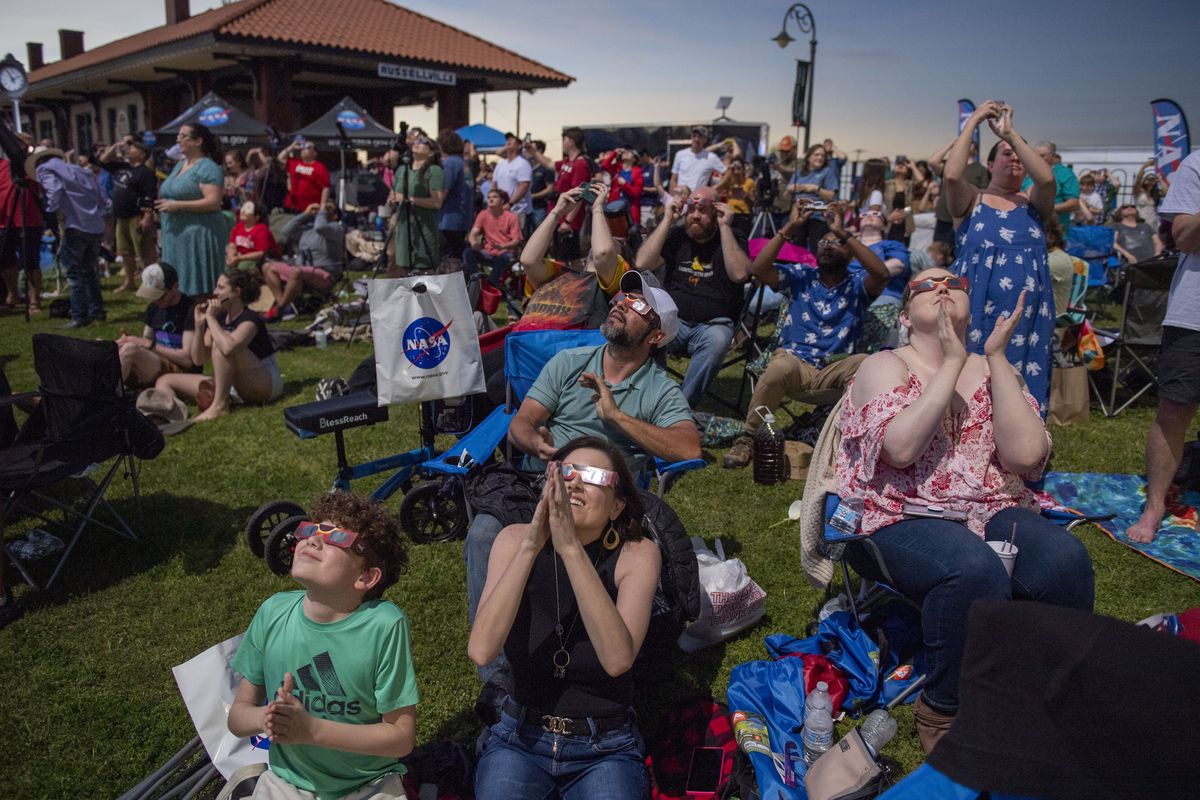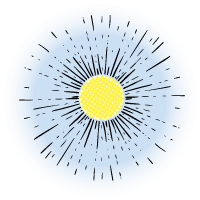Clouds part and crowds scream as total solar eclipse delights the U.S.

DALLAS – Would the total solar eclipse, the last to cross the United States for two decades, live up to the hype?
In a city where history suggested clear skies were likely, forecasts of stubborn clouds threatened for days, hours – and even minutes ahead of the stunning syzygy.
Perhaps it was the cooling effect of the moon’s shadows, or just luck, but as totality approached, the cumulus clouds parted. Conditions became immaculate.
“On a scale of one to 10? 30,” said Mike Alexander, 59, who traveled to Dallas from Fresno, Calif.
It was perhaps the country’s most viewed celestial event ever, spreading the darkness of the moon’s shadow across the homes of some 32 million people, including in major cities from Dallas to Cleveland and smaller communities such as Russellville, Arkansas, and Littleton, Maine. Millions more flocked into the 115-mile-wide path of totality, while the moon blocked at least half of the sun’s face across most of the rest of the United States.
There were scientific experiments, tourist events and religious ceremonies as Americans took in the awe-inspiring view of the last coast-to-coast total solar eclipse until 2045.
Total solar eclipses happen somewhere on Earth once about every 18 months, but a chance to see one in your hometown is rare. Vita Garza Flores was among the first to see the eclipse as the moon’s shadow crossed from Mexico onto U.S. soil in Eagle Pass, Tex. The 76-year-old traveled from Northern California to see the eclipse in the city where she was born.
As the moon inched directly between Earth and the sun, the skies dimmed until only a flicker of light appeared where the sun had been - an effect known as the diamond ring, since it resembles a brilliant gem on a golden ring of light. The crowd screamed as Garza Flores grabbed her eclipse glasses, positioning them across her sunglasses. “Wow!” she said as she looked up.
The awe was not limited to lay watchers – scientists used the phenomenon to look more closely at space and at the sun’s outermost layers, with the blinding light of its rays out of the way.
In Uvalde, Texas, students from the local high school and Southwest Texas Junior College were among the citizen scientists using the eclipse to learn more about the sun, and its effects on Earth. They captured video of the celestial phenomenon via telescope for a research effort that aims to reveal the density of the sun’s middle corona and help scientists to measure the strength of the solar wind – charged particles that can disrupt electricity grids and produce auroras when they reach Earth.
In middle America, the eclipse was a phenomenon. As totality descended in Dayton, Ohio, a loud cheer went up from the crowd outside the home where the Wright Brothers once conceived of human flight.
“I am dumbfounded,” said one young boy. “This,” said another woman who had been fretting about the traffic, “was totally worth it.”
Russellville was one of many humble towns transformed into eclipse destinations, as one of a handful of locations along the path of totality where NASA gathered scientists and broadcast the eclipse’s progress live online. Local tourism officials gave out detailed town maps and sold T-shirts that read, “I got mooned at the eclipse.”
Carbondale, Illinois, hit the eclipse jackpot, falling along the path of totality for a solar eclipse that crossed the United States on Aug. 17, 2017 – and then again for Monday’s eclipse. It gave the town the nickname “the eclipse crossroads of America.” A packed stadium at the southern edge of town erupted in screams as the eclipse began with the “diamond ring” apparition. Unlike six-and-a-half years earlier, clouds did not disrupt the show.
“It’s so much darker than 2017,” one commentator on NASA’s live broadcast said. “This is so much better than 2017.”
The eclipse was the zeitgeist on Monday so much so that Taylor Swift tied it to the release of her upcoming album, sharing a black-and-white video of a typewriter on her Instagram story around 2 p.m. Eastern time, with lyrics that said: “Crowd goes wild at her fingertips/ Half moonshine/ Full eclipse.”
For young Americans, it was a chance to challenge the habit of capturing every event on their phones.
“I feel like I was trying to get it on my camera, but it didn’t do justice to how beautiful it was with my bare eyes,” said Katie Kim, a first-year student at Case Western Reserve University, moments after totality had ended in Cleveland.
“Yeah, I filmed the 360 sunset instead,” said her friend, Flora Kim, another first-year student, marveling at how the eclipse created a sunset-like glow in all directions.
For Susan Bingham, Monday’s eclipse was the fulfillment of a promise 18 years in the making. In 2006, Bingham was living in Burlington, Vt., pregnant with twins and on bed rest when she learned that the city would be in the path of totality. She vowed to be there.
A lot has changed since then: The twins were born, followed by a third child, and the family moved to Massachusetts. But as darkness fell Monday, Bingham, 52, was on a rocky outcropping on the Vermont shore of Lake Champlain with her twins, now just a few days short of 18 years old. She wept.
In her heart, she said, this day marked her twins’ transition to adulthood. “Before and after,” she said. “It was beautiful.”
Any soon-to-be-born children will be adults the next time a total solar eclipse sweeps across the country.
A total solar eclipse will next dim U.S. communities in 2044, but only in parts of Montana and the Dakotas. The country will have to wait one more year for the next coast-to-coast phenomenon, a total eclipse that will stretch from California to Florida on Aug. 12, 2045. It will be a Saturday.
